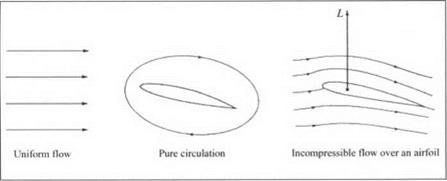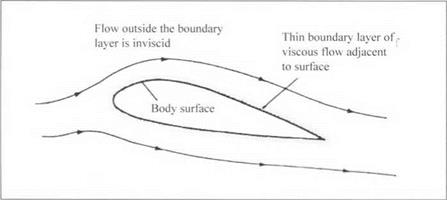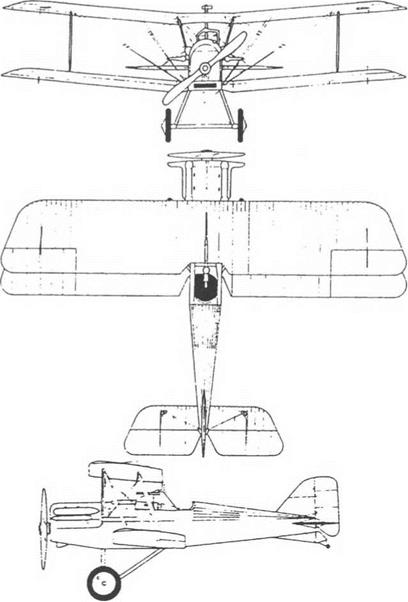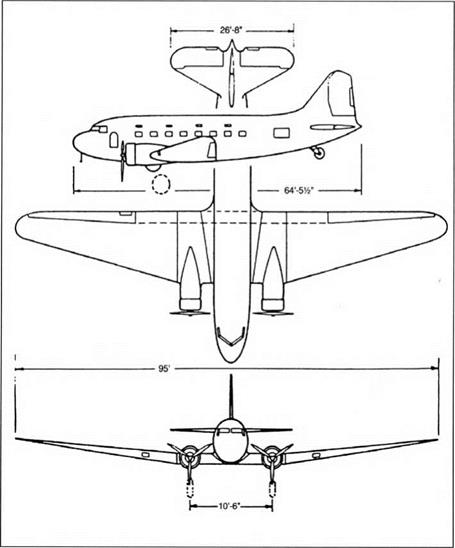The story began where it ended, in court. On 13 January 1914, the United States Circuit Court of Appeals ruled that Glenn Curtiss and his colleagues had infringed the basic patent of Wilbur and Orville Wright.9 The implications for the nascent American aircraft industry were profound. If Curtiss, a prolific inventor and tireless entrepreneur, could not break the Wright patent, no one could. Curtiss himself and his associates could fall back on their own stock of pioneering patents, mostly in seaplanes. But other builders faced the prospect of crippling royalty payments to both Wright and Curtiss. The conflict reached crisis level in December 1916, when the Wright-Martin Company, holder of the Wright patent, announced that manufacturers would have to pay a royalty of 5% on each aircraft sold, with a minimum annual payment of $10,000 per manufacturer.10
This crisis sprang from a patent phenomenon that is rare but not unprecedented. The Wrights held a foundational patent that the courts interpreted broadly. To understand how they got that patent and why the courts might be inclined to construe it generously, it is necessary to briefly retrace their steps.
In 1899, when Wilbur and Orville Wright entered the race to fly, they discovered a crowded field. Most inventors around the world were taking the same path to heavier-than-air flight.11 They were trying to move airfoils through the atmosphere fast enough to generate lift greater than the combined weight of their airframe, engine, and pilot. None had yet overcome the fundamental dilemma: simply enlarging the engine added power and speed, but at the cost of more weight.
The Wrights embraced a different model. They emulated Otto Lilienthal, a German inventor who was conducting glider experiments (what would now be called hang gliding) in an attempt to learn how to actually fly. Like the Wrights who followed him, he was more concerned with what to do aloft than how to get there. The Wrights’ first round of experiments revealed that most other researchers were on the wrong track, producing flawed data. Thus, the Wrights began at the beginning. They built their own glider and learned to control it in flight by applying lessons from bird-watching. Only then did they turn to propulsion. They designed their own engine and their own propellers, relying on data from their own wind tunnel. The resulting airplane, the one that first achieved sustained, powered, human flight in 1903, was a product of their native genius and no small measure of what Alfred North Whitehead would call scientific method.12 They had broken a large problem down into component parts and had solved them one after another using observation, experiment, and theory.
Recognition of the Wright achievement came slowly. The world at first paid little attention to the 1903 flight at Kitty Hawk, NC, and to the follow-on flights in Dayton, Ohio. The brothers filed their first patent application in 1903, but received their foundational patent only in 1906.13 Still, that was early enough to preempt the field. They claimed that the method they had developed for controlling the airplane in flight – wing-warping, which created differential lift on opposite sides by actually twisting the wings – was fundamental to all flight. The courts agreed. Even when Glenn Curtiss introduced an airplane with a superior method of lateral control, the ailerons still used on aircraft today, the courts refused to budge from their commitment to the Wrights, for the Wrights had specifically anticipated ailerons in their patent. Curtiss had behind him the resources and prestige of Alexander Graham Bell and the Smithsonian Institution, both of whom had reason to challenge the Wright stranglehold. But nothing would avail. In case after case, the courts held for the Wrights, leading up to the climactic decision of 1914.
By this time, the matter of aviation development was slipping from the hands of lone inventors and into the board rooms of nascent manufacturers. Orville Wright, demoralized after his brother’s premature death in 1912, sold his interests in 1915 to an entity called the Wright Company, soon to become Wright-Martin Corporation. Curtiss had his own company and thirty important patents on seaplanes; his patents stood in spite of the fact that all of his airplanes infringed on the Wright master patent. With the outbreak of World War I in Europe and the prospect of lucrative government contracts, other aircraft manufactures were attracting capital and coming under the sway of major investors. An Aircraft Manufacturers Association formed in February 1917, but its prospects were dimmed by the refusal of Wright-Martin to join. Jacob Vander Meulen and others have seen in the Aircraft Manufacturers Association an attempt to bring Progressive-era associationalism to aviation. It was, in short, a bid for the middle ground between “the chaos of laissez faire… and the tyrannies of business monopoly and statism.”14 Manufacturers that found such an association congenial might also be expected to embrace patent pooling, a technique that navigated between the treacherous shoals of commercial pirating on the one hand and monopoly extortion on the other.15
Serious movement toward a patent pool, however, was not likely to issue from such voluntarism, at least not when a critical player such as Wright-Martin refused to participate. Instead, government had to intervene forcefully to impose an associationalist model on the entire community.16 Responding to the Wright-Martin royalty claim of December 1916, the Army and Navy both asked the NACA to resolve the aircraft patent stalemate. At the Committee’s request, Congress appropriated $1,000,000 to buy out the existing patents.17 With that leverage in hand, the NACA on 22 March 1917 convened a meeting of its newly-formed patent committee and representatives of the major aircraft manufacturers. They agreed to a cross-licensing agreement that would ultimately pay the Wright and Curtiss interests $1 million each, twice what Congress had appropriated.
Before the agreement could be consummated, the United States entered World War I. Realizing that orders for aircraft would skyrocket, the principals held out for greater royalties. A second round of negotiation ensued, this one including W. Benton Crisp. He was a lawyer for the Curtiss interests who, not coincidentally, had brokered a comparable cross-licensing agreement in the automobile industry that had gotten Henry Ford around the foundational Selden patent. With Crisp’s help, a new agreement was reached that doubled the payments to the Wright and Curtiss interests. The NACA committee on patents submitted its report on 12 July 1917 and the cross-licensing agreement was signed twelve days later.
The specific terms of the agreement warrant close scrutiny.18 All aircraft manufacturers who were party to the agreement were to pay to the MAA $200 for every aircraft they produced, plus royalties to be determined on licenses issued after the agreement was adopted. Of that $200, $175 would be distributed between Wright-Martin and Curtiss until they had each received $2 million on their foundational patents. The remaining $25 per airplane went to administrative costs of the MAA. A Board of Arbitration within the MAA would determine the royalties to be paid on future patents. Significantly, “engines and their accessories” were excluded from the agreement.19
Eight companies signed the cross-licensing agreement on 14 July 1917. They were Aeromarine Plane and Motor Company, Burgess Company, Curtiss Airplane and Motor Corporation, L. W.F. Engineering, Standard Aero Corporation, Sturtevant Aeroplane Company, Thomas-Morse Aircraft, and Wright-Martin Aircraft Corporation.20 These were also the charter members of the Aircraft Manufacturers Association, which had formed on 13 February. Day ton-Wright joined the crosslicensing agreement a few months later. By this time more than 283 companies had formed in the United States to produce aircraft or components other than engines.21 How many were still viable in 1917 and how many individual, unincorporated concerns were manufacturing aircraft is impossible to determine. It is nonetheless clear that these charter eight were the cream of the crop in 1917. They made up less than half of the group that attended the meeting of the AMA in Washington on 22 March 1917.22
“Aircraft trust,” howled critical newspapers when the agreement was announced.23 A patent attorney who protested on behalf of the American Aeronautical Society later described the agreement to Congress as “a most pernicious undertaking, detrimental to the interests of inventors and independent manufacturers, operating to stifle invention and thereby to retard the development of the art of aviation.”24 Another Congressional witness reported in 1918 that the MAA was “condemned by every airplane manufacturer outside the beneficiaries.”25
Suspicions about the agreement followed two tracks. One group protested that the major manufacturers were conspiring to drive out the small operations. Another group saw a “Detroit conspiracy,” an attempt by the automobile industry to comer the wartime market for engine manufacture and parley that into a foothold in airframe manufacturing as well.26 The latter suspicion was fed by the merger in 1916 of the American Society of Aeronautical Engineers and the Society for Automotive Engineers,27 by the role of Crisp in transferring his experience from the Selden patent fight, and by the subsequent role of Detroit manufacturers in wartime production.
At the request of the Secretary of War, the Comptroller of the United States reviewed the cross-licensing agreement to determine if it violated the anti-trust laws. The Comptroller certified that it did not.28 This satisfied the government and allowed the aircraft manufactures to get on with the business of producing planes for the war. That production, however, proved disappointing, by any standards. The government spent over $1 billion for aircraft in World War I but only 960 aircraft reached the front, not a single fighter among them.29 The reasons for this dismal performance had more to do with corruption and mismanagement than with patents. Nevertheless, “aircraft trust” became a familiar refrain in what NACA Chairman Charles D. Walcott called the “hymn of hate” spewing from critics of the establishment after World War I.30
By the middle of the 1920s, other voices had joined the chorus. Billy Mitchell and the advocates of a separate air force held the “air trust” partly responsible for the inadequacies of military aviation in the United States. Advocates of commercial operation believed the government was providing insufficient support for the nascent industry. Some observers believed that air safety required government regulation. And other observers believed that the government should transfer air mail operations to the private sector. Congressional critics of government policy formed the Lampert Committee in 1924 to study this array of problems and make constructive suggestions. Distrustful of the politics of this group, the Coolidge Administration appointed its own Morrow Board to make an independent appraisal. The battle of the boards produced a political stalemate, but a legislative landslide. In short order Congress passed and President Coolidge signed the Air Mail Act of 1925, the Air Commerce Act of 1926, and the Air Corps Act of 1926.
Among them, these new laws established the legal structure that would carry American aviation to the Second World War. All of them recognized the need for government support, but none of them explicitly endorsed the belief that an “air trust” existed or that the patent pool was an illegal combination in restraint of trade. Quite the contrary. An amendment of the cross-licensing agreement dated 31 December 1928 essentially validated the original pact. It, and two supplementary agreements which had preceded it in 1918 and 1923, changed the proportion of MAA income that went to the association and the two major patent holders, but it did not substantially alter the fundamental deal struck in 1917.31 The 1928 agreement was the one overturned in 1975.
By the time the cross-licensing agreement was amended in 1928, American aviation had turned a comer. Charles Lindbergh had crossed the Atlantic Ocean in May 1927, claiming the Orteig Prize first offered in 1919 and more importantly stimulating a buying spree of aviation stock. Before the market crashed in 1929, new purchases had pushed aviation securities over the $1 billion mark.32 Approximately 95% of that value disappeared in the early years of the Depression, but not before the wave of capital had financed an increase in infrastructure. With the new resources, aircraft manufacturers not only survived the Depression, they also created the so-called “airframe revolution.”
The all-metal, stressed skin, monocoque airliner with twin cowled engines and retractable landing gear was not exactly invented in the United States. The various innovative components were invented, sometimes simultaneously, in several countries including the United States. But American airframe manufacturers, especially Boeing and Douglas, combined these features in designs that transformed commercial aviation. Relying on the infrastructure purchased with the capital investment of the late 1920s, Boeing introduced the 247 in 1933 and Douglas followed with the revolutionary DC-2 and the classic DC-3 shortly thereafter. The DC-3 went on to be the most famous and most durable airliner of all time. Along with its imitators, it made possible the growth of a viable commercial airline industry in the United States.
The technical innovations that made these airplanes the best in the world came in part from the manufacturers themselves, but also increasingly from university and government laboratories. The Guggenheim Fund for the promotion of aeronautics, for example, supported laboratories at MIT, the California Institute of Technology, and other universities around the country.33 The National Advisory Committee for
Aeronautics supported what it called “fundamental research,” benefiting both the military services and the commercial industry.34 Patents contributed to this development, but the role of government especially made patents difficult to rely on. The government often insisted that developments supported by its funding be made freely available to all, or at least licensed for government purposes. Similarly, the NACA agreed to respect proprietary information whenever possible in conducting research for industry, but in its own work on the famous NACA cowling, for example, it declined to patent.35
The outbreak of World War II only accelerated these trends. Aircraft production went from less than 6,000 in 1939 to more than 96,000 in 1944.36 In some cases, designs from one manufacturer were handed over to another for production. Existing patents were licensed as necessary, not only to other aircraft manufacturers but to automobile manufacturers as well.37 As Robert Ferguson discovered in his study of aircraft manufacturing in World War II, patents and even proprietary knowledge hindered the flow of information but little. More intractable were the incompatibility of “technological cultures” in the different companies, “that is, the unique methods and traditions of practice for designing and producing aircraft that existed within each firm.”38 Some companies, for example, moved airframe components to the workers in assembly-line fashion, while others moved workers about the shop floor. Similarly, tooling varied greatly from company to company and existed beyond the reach of the cross-licensing agreement. Ferguson found that the MAA and the patent pool provided “an adequate legal and financial infrastructure” for the exchange of ideas, but new institutional arrangements were needed to provide an “organizational framework for sharing proprietary technologies.”39 A National Aircraft War Production Council was created to fill this need.
After World War II, the American aircraft industry did not return to its pre-war status. The creation of a separate air force, the elevation of strategic bombing to the first line of defense, the outbreak of the Cold War, the advent of rockets and missiles, and the commitment of the United States to a qualitative and quantitative arms race with the Soviet Union all combined to transform the aircraft manufacturing industry into the aerospace industry. Bulwark of the military – industrial complex and mainstay of the U. S. balance of payments, the aerospace industry grew to enormous proportions without a comparable growth in the number of companies. The dollar value of aircraft shipments doubled between 1958 and 1992, from $31.3 billion to $63.0 billion (both in 1992 dollars), while the number of companies rose in the same period only from 113 to 151 40 The trend was even more striking among major airframe manufacturers, where mergers in the 1990s of Lockheed Martin, Northrup Grumman and Boeing/McDonnell Douglas accelerated the concentration of the industry.
As aerospace business grew, those fewer and fewer manufacturers grew larger and larger. Their ideal business formula was some combination of military and commercial production. This allowed companies to conduct research for the government and then convert that knowledge into commercial products.41 Very often the research conducted for the military services set higher standards for quality and reliability than would have been warranted by market forces; the resulting technologies nevertheless found their way into commercial products. Patents played little role in this enterprise, in part because the government insisted on licensing the knowledge gained with its funds; in part because the success of the companies was predicated more on design, production, and marketing than it was on invention; and in part because the firms preferred the secrecy of proprietary knowledge to the disclosure of patenting. For whatever reason, the American formula worked. In 1975, when the MAA disappeared, the U. S. aerospace industry controlled 67% of the international market.42














